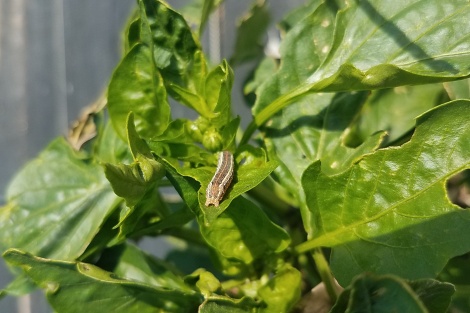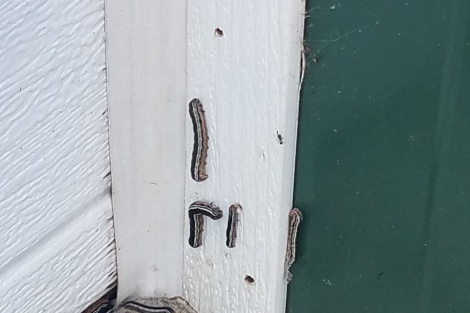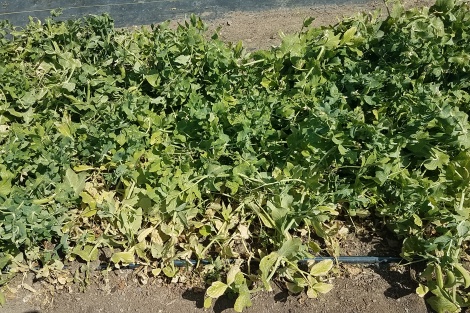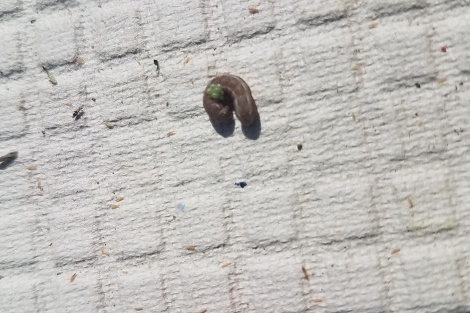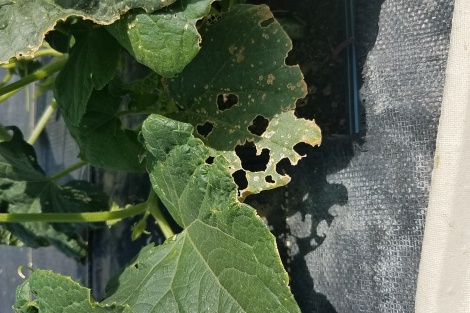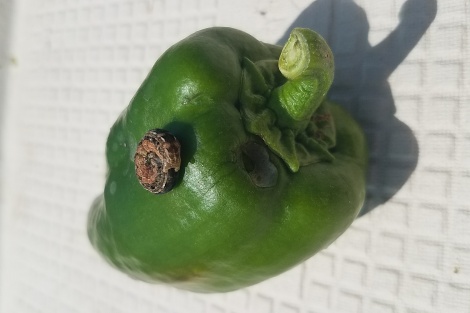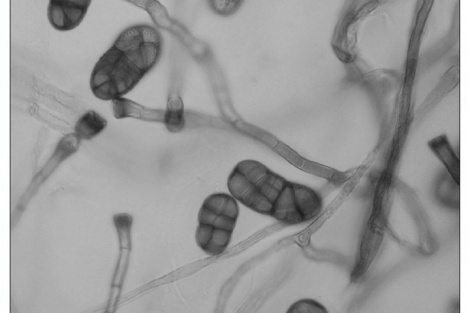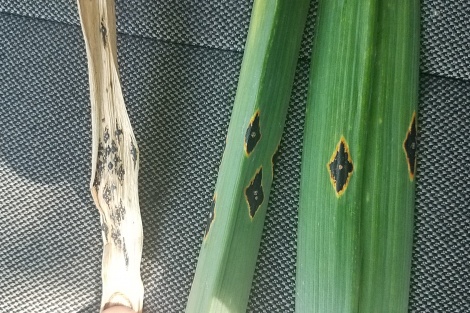In this Issue:
- Armyworms: Infestations around Utah
- Stemphylium Leaf Blight: Spotted on Garlic
Armyworms
Overview
This year has seen an increase of armyworm reports across Utah. Armyworm populations tend to be sporadic and the influx this season does not necessarily predict the population size for next season. Some armyworm species found throughout Utah include the Beet Army (Spordoptera exigua), Bertha armyworm (Mamestra configurata), Fall armyworm (Spodopter frugiperda), and the Western yellowstriped armyworm (Spodoptera praefica). The Western yellowstriped armyworm is native to western North America and is a general feeder that attacks a variety of crops. There are generally 3-4 generations every year, with broods of adults present in March-May, May-June, July-August, and August-November. The latter generation of Western yellowstriped armyworms will overwinter as pupae. This species does not overwinter well in cold climates, which contributes to their populations being sporadic.
Eggs are green to pink/brown, ridged, spherical, and are less than 1mm. Adults female moths will lay eggs in clusters of 200-500 on the underside of host plant leaves. Duration of the eggs stage is 3-5 days within warm temperatures. Once hatched, larvae develop through six instars and grow up to 35 mm long. They are black/brown with notable yellow stripes along their bodies. The pupae stage occurs within the soil and can last 9-22 days, once the adult moth emerges it measures up to 41mm at full wing span. They are typically brown/grey with additional white coloration near the margin.
Damage
Armyworms target a wide range of hosts including: alfalfa, artichoke, asparagus, beans, beets, broccoli, Brussels sprouts, cabbage, carrot, cauliflower, celery, collards, corn, cucumber, garlic, kale, lettuce, melon, onion, parsley, parsnip, pea, pepper, potato, radish, rhubarb, spinach, sweet potato, Swiss chard, tomato, grassy weeds and crops, and many herbaceous ornamentals. The larvae have chewing mouthparts in which they can skeletonize the foliage and eventually entire leaves. They also tend to consume the fruits of vegetables.
Management
– The proximity of crops to rangeland (containing weeds hosts) or alfalfa fields may be a critical factor in predisposing the vegetable crops to injury. When the alfalfa hay is mowed populations will disperse simultaneously and invade vegetables. Because of this, creating a barrier such a trench and/or insecticide strip around the field will assist in preventing migration in.
– The microbial insecticide Bacillus thuringiensis (Bt) can be effective, but only when the larvae are young.
– Bt aizawai strain and Spinosad are also effective on the young larvae.
Additional Resources
Armyworm Pest Management Guide (UC IPM)
Western Yellowstriped Armyworm (British Columbia Ag)
Armyworms & Cutworms (Utah Veg Production & Pest Management Guide)
Stemphylium Leaf Blight in Garlic
Overview
Stemphylium Leaf Blight on garlic is caused by the spreading of spores from the fungus Stemphylium vesicarium. Though primarily affecting onion, a few cases on garlic have been reported in Utah. This disease is limited to leaves and not the bulbs. The infections are caused when the spores are blown on to the surface of existing wounds (from thrips feeding, wind, hail, etc). Infections start off small with yellow/brown spots that eventually coalesce into extensive blighting. The spores will turn dark due to the formation of fruiting bodies. The recent occurrence in Utah is likely due to the wet spring. Overhead irrigation and long periods of standing water with the temperature at 65-77 degrees can also contribute to its spread. Though this disease is common, it rarely leads to economic crop loss. This disease should not be confused with Iris yellow spot virus, thrip feeding, purple blotch, or other bacterial leaf diseases.
Management
– Rotate garlic with other crops as the fungus is able to overwinter in garlic residue or the soil.
– Reduce the plant density to prevent a humid environment and contact amongst the foliage.
– Remove the plant debris at the end of each season.
– Click here to view commercial fungicide options (see the label to verify use for garlic)
– Click here to view home fungicide options (see the label to verify use for garlic)
Additional Resources
Purple Blotch & Stemphylium Leaf Blight (Utah Veg Production & Pest Management Guide)

